Where’s the Czech Republic?
And why am I live from it? If you're a non-European reader, you might be excused for not being familiar with the history of this interesting central European, formerly communist country known as Czechoslovakia.
I didn’t know anything about it before spending almost a week here with the International Garden Center Association*, visiting garden centers, medieval villages, manufacturers, a few castles (they’ve got something like 1,200, in various states of repair) and more, with some 180 garden center owners, managers and suppliers from 16 countries.
As I hope you know, I wouldn’t pretend to be an expert on any country or its garden center industry after just five days, but I will share the most interesting and relevant things I’ve learned while here—the first being that “garden center” is “zahradniché centrum” in Czech. (Hmmm. I think we’ll stick with garden center.)
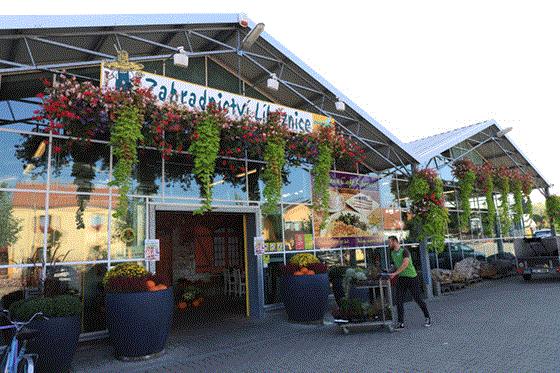
*The IGCA is the association of the world’s garden center associations. There are currently 18 member countries; AmericanHort is the U.S. member. Since 1960, IGCA has held an annual “Congress” somewhere in the world to tour garden centers and share ideas and best practices.

A bit about the country
Landlocked, Czechia (the country’s official nickname) is surrounded by Poland to the northeast, Germany to the northwest and west, Austria to the south and Slovakia to the east. Prague, our home base, is the capital. Outside of the city, the country is mostly agricultural, with lots of barley and wheat production with which they feed their need for beer—Czechia has the highest beer consumption in the world. (One of our stops was Budweiser Budvar—the original Budweiser—which dates back to the 15th century.)
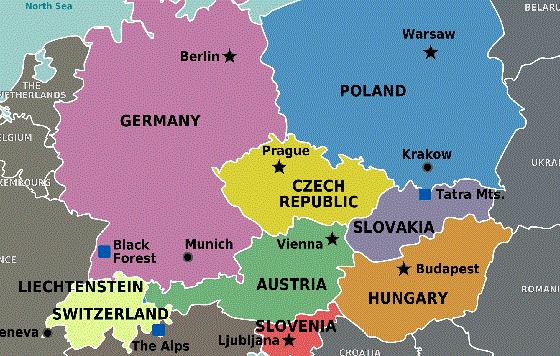
It’s a good time to be here, as 2018 is the 100th anniversary of Czech independence after centuries of rule by the Austrian Habsburgs. The country of Czechoslovakia was formed in 1918, but after WWII, when the Russians helped free Czechoslovakia from the Germans, the country was occupied by the communist Soviets until the fall of the Berlin Wall in 1989.
Czechoslovakia split into Czechia and Slovakia in 1993, which means it’s a young capitalist market, with all the garden centers we’ve visited being less than 30 years old. I’m told it’s the most stable and prosperous of the former Soviet countries.

Signs of the Soviet days
I asked about remnants of communism, but there don’t seem to be many, as the country has worked rapidly to Westernize. The most obvious signs are the rows of stark apartment buildings that dot the cities. They’ve been painted in pretty colors and patterns in an effort to brighten them up.
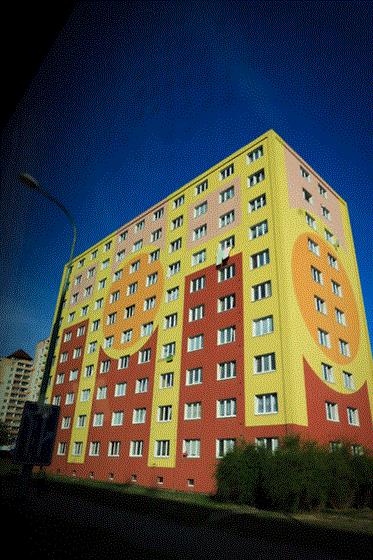
Under communism, all land and businesses were taken over by the state, and even if a nursery operated under state ownership, it was basic trees and shrubs. One could buy plants, but there were no garden centers per se. It sounds like a dreary time: For instance, a butcher with whom we did a walking food tour of Prague told us that the Soviets made all restaurants serve the same food cooked to the same recipes. So few people ate out. That's certainly changed now, as the Prague restaurant scene is burdgeoning, with two Michelin-star eateries. A favorite theme is to put a modern twist on grandma’s classics.
But Prague—beautiful! The old buildings were not damaged in WWII like in so many other capitals, so the city is a textbook of architecture through the centuries. Every traveler I know who’s been here says it’s the prettiest European city they’d seen and I’d have to agree (although Paris is hard to beat).
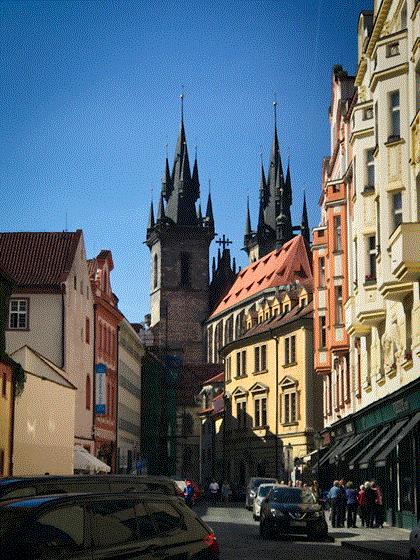

Gardening habits of Czechs
Another remnant of the communist days is the Czech penchant for growing their own food. I was told that during the soviet occupation, even if you lived in an apartment, you were given a small plot of land on which to grow produce and the habit persists. When we peek over walls into gardens, we see fruit trees, vegetable patches and small greenhouses. Some flowers, yes, notably window boxes spilling forth ivy geraniums, but not extensive displays of color.
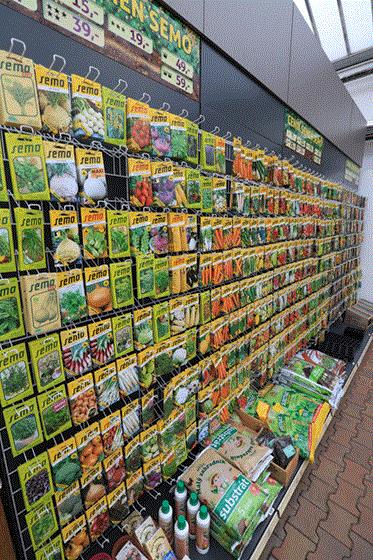
In the garden centers, seeds, herbs, veggies, and fruit bushes and trees are ubiquitous. But we also saw plenty of seasonal annuals and blooming houseplants, so obviously those do get purchased.
We asked about the foliage and succulents trend. Younger people are interested, but they haven't taken off like in the rest of the West. That’s in part due to lower incomes and less disposable income. However, the category is growing and there’s plenty available in the garden centers, mostly from Germany and the Netherlands.
A young industry
I mentioned that it’s a young industry. Most of the garden centers we visited were started in the mid-’90s or later, even if the original nursery business goes back several generations. Given that, they’ve come a long way, thanks to driven, enthusiastic owners who’ve traveled Europe and worked with the best consultants (several of whom were on our trip and gave presentations to the group) to bring back the best ideas.
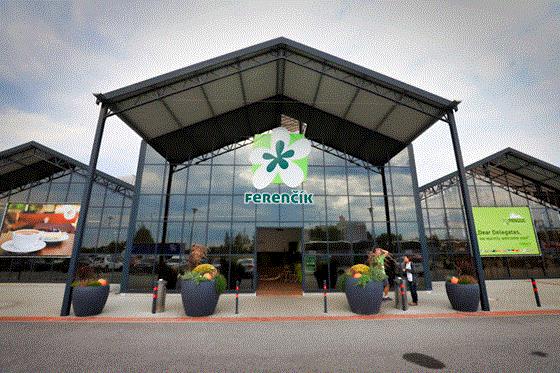
The result is that Czech garden centers don’t necessarily look “Czech”—whatever that might mean. Architecturally, we saw several new greenhouses done in a Dutch or German style, with painted frames, tinted glass at the front, and large, colorful banners depicting seasonal scenes. Inside, benches and displays leaned toward the modern, western European style.
Two features they’ve added most recently are cafés and gourmet food departments. I was told by one consultant that we wouldn’t have seen either two years ago. Now all the places we visited had small coffee shops and decent gourmet food offerings.
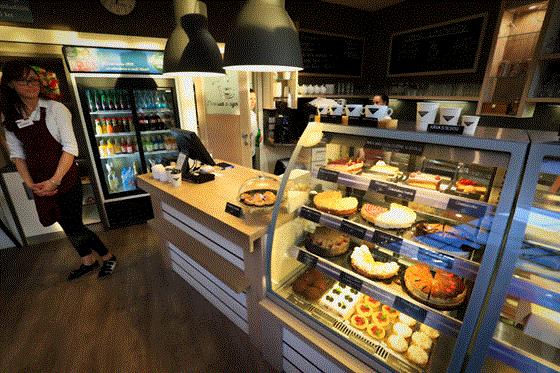
The chains are here, namely Hornbach, from Germany. They’ve got 10 stores, including four in Prague. We visited one and the garden center was stunningly nice, both in selection and tidiness.

Is there a true "Czech" IGC?
I asked if we’d see a “Czech” garden center—one that showed some authentic local flare—and I was told the best was Chládek. It was! A big, modern, two-bay greenhouse and nursery on the side of a hill overlooking Prague, Chládek Zahradniché Centrum was founded in 1992 by a family with more than 100 years in horticulture. Mr. Chládek is considered a pioneer in the Czech industry.
I noted two things that could be considered “Czech.” First, a combination of modern European and rustic displays. For instance, down the center of one bay was a giant table made from railroad ties, and also some solid metal garden tables and benches. The outside of the bay were modern Dutch-style garden tables. It made a nice contrast between new and old.
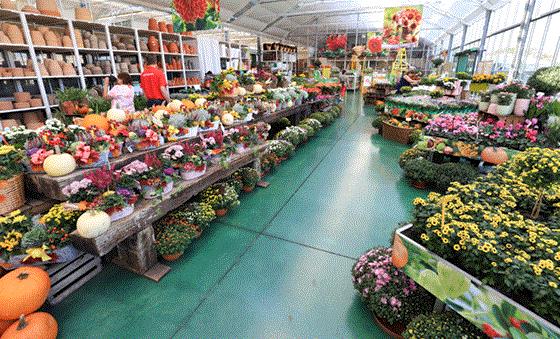
Once in the gift area, I noted they switched between display systems depending on the product category: Home décor was on tall, modern, whitewashed wood displays, while across the aisle, gourmet was on ornate French-style furnishings. It reminded me of the home décor you see across Europe, which blends old and new seamlessly, such as vintage furnishings and sleek LED lighting.
Second, outdoor seating. We all have the random bench upon which our weary customers can take a load off. At Chládek, they have, I think, four room-size seating areas out in their landscape department. Perhaps they serve as an extension of their nice café, which is nearby? Two did feature beer garden-style tables and chairs. But I’ve never seen deep seating for six, and a coffee table, in a garden center. And they had two such spots. A great way to get your customers to relax and stay longer.

Oh, animals, too! Quite a few of the centers, including Chládek, had rabbits, Guinea pigs or goats to entertain the kiddos.

They know our brands
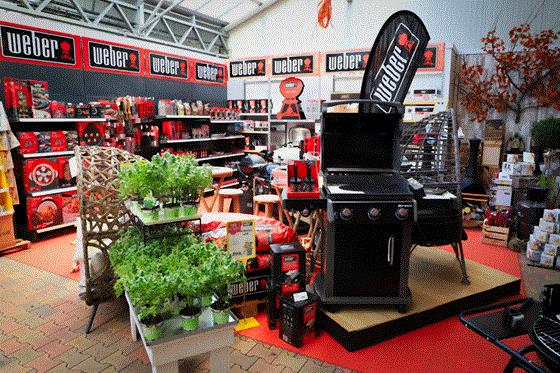
You’d feel comfortable in a Czech garden center, thanks to Yankee Candle (which recently opened only its second factory here, to better serve Europe); Weber, Fiskars and Gardena. They seem to like vintage tin advertising signage, which featured both European art and vintage American brands and images (John Deere, Coke, Harley-Davidson, Route 66).
Probably the most “Czech” of all the products we saw was the “zelak:” a ceramic crock for making sauerkraut. It’s apparently a very central European thing.
I could write much more ...
... and will, next time. For now, it’s time to hop on the bus for Day 5, which I believe features another castle, plus a walking tour of old Prague. Next time, I’ll show you some interesting products (upside-down phalaenopsis?), introduce you to a young woman getting her Ph.D in edible flowers, and show you a whole lot of things to do with pallets and round hay bales.
Oh, before I forget, next year's IGCA tour will be based in Windsor, England! It will be a can't-miss event—if you're thinking this sounds like a great learning experience, then consider England for your first IGCA tour. Learn more at www.igca2019.co.uk.
See you next time,

Chris Beytes
Editor
GrowerTalks and Green Profit
This e-mail received by 23,244 loyal readers!
Thanks to my loyal sponsors, who help me reach the 23,244 readers of Acres Online in 66 countries. Want to be one of them (a sponsor, that is)? Give Paul Black a shout and he'll hook you up.